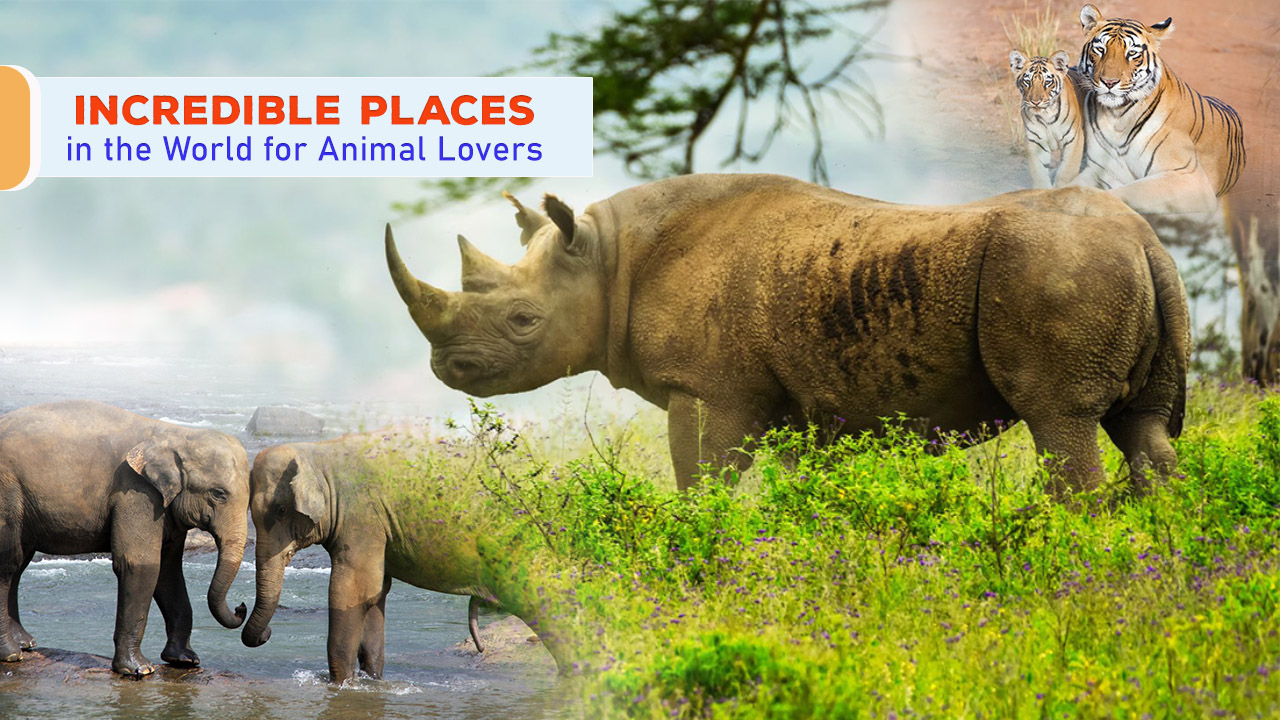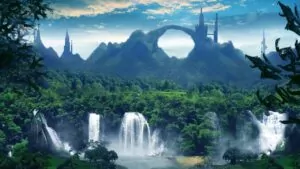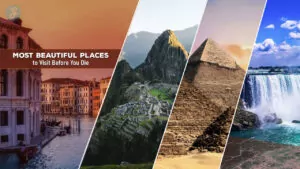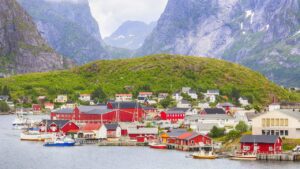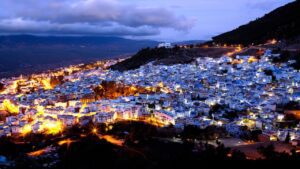Are you an animal enthusiast looking for your next adventure? Do you dream of getting up close and personal with exotic creatures in their natural habitats? If so, you’re in for a treat! This article will take you on a journey to ten amazing destinations around the world that are perfect for animal lovers. From the plains of Africa to the depths of the Great Barrier Reef, we’ll explore some of the most incredible places where you can observe and interact with a wide variety of animals. Prepare to find inspiration and begin strategizing your upcoming wildlife journey!
For many of us, animals hold a special place in our hearts. They fascinate us with their beauty, intelligence, and unique behaviors. Watching wildlife in their natural habitats can be a truly magical experience, creating memories that last a lifetime. Whether you’re a bird watcher, a marine life enthusiast, or simply someone who loves all creatures, wonderful and small, there’s a perfect destination out there for you.
In this article, we’ll take you on a virtual tour of ten incredible places around the world that offer unforgettable experiences for animal lovers. We’ll explore diverse ecosystems, from lush rainforests to vast savannas, and discover the amazing creatures that call these places home. Along the way, we’ll provide you with fascinating facts, travel tips, and information on conservation efforts to help you plan your perfect animal-focused adventure.
So, pack your binoculars, grab your camera, and let’s set off on a journey to discover some of the most incredible wildlife destinations on Earth!
1. Serengeti National Park, Tanzania
Our first stop takes us to the heart of East Africa, to the world-famous Serengeti National Park in Tanzania. This vast ecosystem is home to one of the most spectacular wildlife shows on Earth: the Great Migration.
Great Migration
Every year, over 1.5 million wildebeest, along with hundreds of thousands of zebras and gazelles, make a circular journey across the Serengeti-Mara ecosystem in search of fresh grazing lands and water. People often refer to this incredible spectacle as the “Greatest Show on Earth,” and with good reason. The sight of thousands of animals thundering across the plains is truly awe-inspiring.
Wildlife Diversity
While the Great Migration is undoubtedly the star attraction, the Serengeti is home to an incredible diversity of wildlife year-round. Here are just a few of the animals you might encounter:
- Lions: The Serengeti is home to around 3,000 lions, one of the largest populations in Africa.
- Elephants: These gentle giants roam the park in family herds.
- Leopards: Keep your eyes peeled for these elusive big cats lounging in trees.
- Cheetahs: Watch these speedy predators chase down their prey on the open plains.
- Hippos: Observe these massive animals wallowing in the park’s rivers and water holes.
- Giraffes: Spot these long-necked beauties gracefully browsing on acacia trees.
Best Time to Visit
While the Serengeti offers amazing wildlife viewing year-round, the best time to witness the Great Migration depends on which part of the cycle you want to see:
- December to March: The herds are in the southern Serengeti, where they birth their young.
- April to May: The migration starts moving northward.
- June to July: This is often the best time to see the dramatic river crossings.
- August to November: The herds are usually in the northern Serengeti and Masai Mara (Kenya).
Conservation Efforts
The Serengeti ecosystem faces several challenges, including habitat loss, poaching, and climate change. However, various conservation initiatives are working to protect this unique environment:
- The Serengeti-Mara Ecosystem Conservation Program: This initiative aims to maintain the integrity of the entire ecosystem across national borders.
- The park uses Rangers and advanced technology to combat poaching.
- Community-based conservation: Local communities participate in conservation efforts, helping to reduce human-wildlife conflict.
You’re not only treating yourself to an incredible wildlife experience by visiting the Serengeti, but you’re also contributing to these important conservation efforts through your park fees and responsible tourism.
2. Galápagos Islands, Ecuador
Our next destination takes us to a place that inspired Charles Darwin’s theory of evolution: the Galápagos Islands. Located about 600 miles off the coast of Ecuador, this archipelago of volcanic islands is a living laboratory of evolution and a paradise for animal lovers.
Unique Wildlife
The Galápagos Islands are home to many species found nowhere else on Earth. Here are some of the unique animals you might encounter:
- Giant Tortoises: These gentle giants, which can live for over 100 years, are the islands’ most famous residents.
- Marine Iguanas: The only sea-going lizard in the world, these unique creatures can dive up to 30 feet to graze on algae.
- Galápagos Penguins: The only penguin species found north of the equator.
- Blue-footed Boobies: Known for their distinctive bright blue feet and comical mating dance.
- Galápagos Sea Lions: Playful and curious, these sea lions often interact with snorkelers and divers.
- Darwin’s Finches: A group of about 13 species of small land birds with specially adapted beaks.
Island Hopping
The Galápagos archipelago consists of 13 main islands and several smaller islets, each offering unique landscapes and wildlife viewing opportunities. The following are some of the most popular islands:
- Santa Cruz: Home to the Charles Darwin Research Station and giant tortoise breeding center.
- Isabela: The largest island, featuring five active volcanoes and a variety of wildlife.
- Fernandina: One of the most pristine islands, known for its large colony of marine iguanas.
- Española: Famous for its waved albatross colony and beautiful beaches.
Marine Life
The Galápagos Marine Reserve is one of the largest and most biologically diverse marine protected areas in the world. Snorkeling or diving in these waters can expose you to the following:
- Hammerhead Sharks: Large schools can be seen at dive sites like Darwin and Wolf Islands.
- Galápagos Sharks: A species unique to the islands.
- Manta Rays: These graceful giants can often be seen gliding through the water.
- Sea Turtles: Green sea turtles are common in the waters around the islands.
- Tropical Fish: A colorful array of fish species inhabit the coral reefs.
Best Time to Visit
You can visit the Galápagos Islands year-round, but each season offers unique experiences:
- December to May (Warm Season): Warmer air and sea temperatures, ideal for swimming and snorkeling. This is also the breeding season for many land birds.
- June to November (dry season): cooler temperatures but more marine life activity. This is the best time to see whales and dolphins.
Conservation Challenges
The unique ecosystem of the Galápagos faces several threats:
- Invasive species: introduced plants and animals pose a significant threat to native species.
- Climate Change: Rising sea temperatures affect marine life and can lead to coral bleaching.
- Tourism Impact: While tourism provides important funding for conservation, it also puts pressure on the islands’ resources.
The Galápagos National Park Service and various NGOs are working on the following initiatives to address these challenges:
- Invasive species eradication: programs to remove non-native plants and animals.
- Marine Protected Areas: To protect marine ecosystems, establish no-fishing zones.
- Sustainable Tourism: Implementing strict regulations to minimize visitors’ impact.
By visiting the Galápagos responsibly, you can contribute to these conservation efforts and experience one of the most unique wildlife destinations on the planet.
3. Kruger National Park, South Africa
Our journey now takes us to one of Africa’s largest game reserves, Kruger National Park in South Africa. This vast wilderness area, covering nearly 20,000 square kilometers, is a haven for wildlife enthusiasts and one of the best places in the world to see the “Big Five” in their natural habitat.
The Big Five and More
Kruger National Park is home to an incredible diversity of wildlife, including:
- Lions: With over 1,600 lions, Kruger offers excellent opportunities for lion sightings.
- Elephants: The park has a thriving elephant population of around 13,000.
- Leopards: Though elusive, Kruger is one of the best places to spot these beautiful big cats.
- Rhinos: The park is home to both white and black rhinos.
- Cape Buffalo: Large herds roam the savanna and are often seen near water sources.
Beyond the Big Five, you may also encounter:
- Cheetahs: Though less common than other big cats, cheetah sightings are possible.
- Wild Dogs: Kruger is one of the last strongholds for these endangered predators.
- Hippos: Often seen wallowing in rivers and water holes.
- Crocodiles: Nile crocodiles inhabit many of the park’s rivers.
- Over 500 bird species: making it a paradise for birdwatchers.
Self-Drive Safaris
One of the unique aspects of Kruger National Park is the ability to do self-drive safaris. This allows visitors to explore the park at their own pace, creating a more personalized experience. However, guided safaris are also available and can provide valuable insights from experienced rangers.
Best Time to Visit
You can visit Kruger National Park year-round, but each season offers unique experiences.
- Dry Season (May to September): This is generally considered the best time for wildlife viewing. As water becomes scarce, animals gather around waterholes, making them easier to spot.
- Wet Season (October to April): The landscape is lush and green, and many animals give birth during this time. It’s also an excellent time for bird watching.
Accommodation Options
Kruger offers a wide range of accommodation options to suit different budgets and preferences:
- Rest Camps: These provide basic amenities and are located throughout the park.
- Bush Camps: smaller, more remote camps for a more intimate experience.
- Private Lodges: Luxury accommodations often located in private concessions within or adjacent to the park.
Conservation Efforts
Kruger National Park is faced with several conservation challenges, including:
- Poaching: Specifically, rhinos are targeted for their horns.
- Habitat loss: Areas surrounding the park are increasingly being developed.
- Climate Change: Affecting rainfall patterns and vegetation.
To address these issues, several initiatives are in place:
- Anti-Poaching Units: Highly trained rangers patrol the park to protect wildlife.
- Transfrontier Conservation: Kruger is part of the Great Limpopo Transfrontier Park, which aims to create larger, connected protected areas across national borders.
- Research programs: ongoing studies help inform conservation strategies.
Visiting Kruger National Park not only offers incredible wildlife experiences, but also supports these vital conservation efforts through park fees and responsible tourism.
4. Great Barrier Reef, Australia
We transition from the African savanna to the pristine waters of Australia’s Great Barrier Reef. The Great Barrier Reef is the world’s largest coral reef system, stretching over 2,300 kilometers. It is a paradise for marine life enthusiasts and one of the most incredible places on Earth for animal lovers.
Marine Biodiversity
The Great Barrier Reef is home to an astonishing diversity of marine life.
- Over 1,500 species of fish
- 400 types of rigid coral
- 4,000 varieties of mushrooms
- 240 species of birds
- There are numerous marine mammals, including dolphins and whales.
Here are some of the incredible creatures you might encounter:
- Clownfish: Made famous by the movie “Finding Nemo,” these colorful fish live among sea anemones.
- Sea Turtles: This area is home to six of the seven species of sea turtles in the world.
- Manta Rays: You can frequently see these graceful giants gliding through the water.
- Whales: Humpback whales migrate through the reef annually.
- Sharks: Various species, including reef sharks and the occasional whale shark.
Exploring the Reef
There are several ways to experience the wonders of the Great Barrier Reef:
- Snorkeling: Many areas of the reef are accessible to snorkelers, allowing you to float above coral gardens teeming with life.
- Scuba Diving: For a more immersive experience, diving allows you to explore the reef up close.
- Glass-Bottom Boats: If you prefer to stay dry, these boats offer a window into the underwater world.
- Scenic Flights: Provide a panoramic perspective of the reef’s remarkable size and splendor.
Best Time to Visit
You can visit the Great Barrier Reef year-round, but different seasons offer unique experiences:
- June to October: This is the dry season with cooler temperatures and clearer water, ideal for diving and snorkeling.
- November to May: The wet season brings warmer temperatures and the possibility of seeing coral spawning events.
Conservation Challenges
The Great Barrier Reef faces several significant threats:
- Climate Change: Rising sea temperatures lead to coral bleaching events.
- Ocean Acidification: As CO2 levels rise in the atmosphere, the ocean becomes more acidic, affecting coral growth.
- Water Quality: Runoff from coastal development can negatively impact reef health.
- Crown-of-Thorns Starfish: These coral-eating starfish outbreaks can cause significant damage.
Conservation Efforts
Numerous initiatives are underway to protect the Great Barrier Reef:
- Great Barrier Reef Marine Park: This protected area helps manage human activities on the reef.
- The Reef 2050 Plan: a long-term sustainability plan for protecting and managing the reef.
- Crown-of-Thorns Starfish Control Program: Efforts to manage outbreaks of these destructive starfish.
- Reef Restoration Projects: These include coral nurseries and transplantation programs.
By visiting the Great Barrier Reef responsibly, you can witness one of nature’s greatest wonders while supporting crucial conservation efforts.
5. Borneo, Malaysia, or Indonesia
Our next stop is Borneo, the third-largest island in the world that Malaysia, Indonesia, and Brunei all share. Known for its incredible biodiversity and unique wildlife, Borneo is a dream destination for animal lovers, particularly those interested in primates and tropical ecosystems.
Unique Wildlife
Borneo is home to a wealth of unique and endangered species, including:
- Orangutans: These “people of the forest” are among Borneo’s most famous residents.
- Proboscis monkeys: Known for their distinctive long noses, these primates are found only in Borneo.
- Pygmy Elephants: The smallest elephant species in the world.
- Clouded Leopards: Though rarely seen, these elusive big cats inhabit Borneo’s forests.
- Hornbills: Several species of these large, colorful birds can be found on the island.
- Sun Bears: The world’s smallest bear species is native to Southeast Asia.
Exploring Borneo’s Ecosystems
Borneo offers diverse ecosystems to explore:
- Rainforests: Home to countless plant and animal species.
- Mangrove Swamps: Important nurseries for marine life.
- Peat Swamp Forests: Unique ecosystems that store vast amounts of carbon.
- Rivers: The lifeblood of the island, home to crocodiles, fish, and riverine forests.
Key Areas for Wildlife Viewing
These are some of the best places to experience Borneo’s wildlife:
- Sepilok Orangutan Rehabilitation Centre (Malaysia): Offers the chance to see orangutans up close.
- Kinabatangan River (Malaysia): Excellent for spotting proboscis monkeys, pygmy elephants, and a variety of birds.
- Danum Valley Conservation Area (Malaysia): One of the best places for viewing Borneo’s wildlife in pristine rainforest.
- Tanjung Puting National Park (Indonesia): Known for its orangutan population and river cruises.
Best Time to Visit
Borneo can be visited year-round, but the best time depends on your specific destination:
- March to October: generally drier months, ideal for trekking and wildlife viewing.
- November to February: Wetter months, but can offer unique experiences like turtle nesting on some beaches.
Conservation Challenges
Borneo faces significant environmental challenges:
- Deforestation: Plantations that produce palm oil and timber have cleared large areas of rainforest.
- Habitat fragmentation: The disconnection of remaining forest areas often impacts the movement of wildlife.
- Poaching: Illegal hunting threatens many species, including orangutans and pygmy elephants.
- Climate Change: Altering weather patterns and increasing the risk of forest fires.
Conservation Efforts
Numerous initiatives are working to protect Borneo’s unique ecosystems:
- Heart of Borneo Initiative: A trilateral agreement between Malaysia, Indonesia, and Brunei to conserve and sustainably manage the forests of central Borneo.
- Orangutan Rehabilitation Centers: Places like Sepilok and Semenggoh work to rehabilitate orphaned orangutans and release them back into the wild.
- Sustainable Tourism: Eco-lodges and responsible tour operators are helping to create economic incentives for conservation.
- Reforestation Projects: efforts to replant cleared areas and create wildlife corridors.
By visiting Borneo responsibly, you can contribute to these conservation efforts while experiencing one of the world’s most biodiverse regions.
6. Yellowstone National Park, USA
Our journey now takes us to North America, to the world’s first national park: Yellowstone. Located primarily in Wyoming, with parts extending into Montana and Idaho, Yellowstone National Park is renowned for its geothermal features and diverse wildlife.
Iconic Wildlife
Yellowstone is home to a wide variety of animals, including:
- Grizzly Bears: Within the park boundaries, about 150 grizzlies live.
- Gray Wolves: Since being reintroduced in the 1990s, wolves have made a remarkable comeback.
- Bison: The largest public herd of American bison roams freely in Yellowstone.
- Elk: You can see large herds, especially in the fall during the rutting season.
- Moose: Wetland areas are home to these large deer, despite their rarity.
- Bighorn sheep: often seen on steep, rocky terrain.
- Bald Eagles: People frequently spot these majestic birds near rivers and lakes.
Geothermal Wonders
While not animals, Yellowstone’s geothermal features are a crucial part of its ecosystem.
- Old Faithful: The park’s most famous geyser, erupting about every 90 minutes.
- Grand Prismatic Spring: The largest hot spring in the US, known for its vibrant colors.
- Mammoth Hot Springs: travertine terraces created by mineral-rich hot water.
Best Time to Visit
Yellowstone is open year-round, but each season offers a unique experience:
- Summer (June to August): Peak season with warm weather and all facilities open.
- Fall (September to November): Fewer crowds, beautiful fall colors, and elk rutting season.
- Winter (December to February): A winter wonderland with opportunities for snowmobiling and cross-country skiing.
- Spring (March to May): Wildlife becomes more active as the park thaws, including bear sightings.
Wildlife Viewing Tips
- Dawn and dusk are the best times for wildlife activity.
- Lamar Valley and Hayden Valley are known as the “Serengeti of North America” due to their abundant wildlife.
- Always maintain a safe distance from wildlife (at least 100 yards from bears and wolves, 25 yards from other large animals).
Conservation Challenges
Yellowstone faces several conservation challenges:
- Climate Change: Affecting the park’s ecosystems and geothermal features.
- Invasive Species: Non-native plants and animals threaten native species.
- Increased Visitation: Managing the impact of millions of annual visitors.
Conservation Efforts
Yellowstone is at the forefront of many conservation initiatives.
- Wolf Reintroduction: A successful program that has helped restore the park’s ecosystem balance.
- Bison Management: efforts to maintain a healthy, wild bison population while managing conflicts with nearby ranchers.
- Fire Management: Controlled burns are used to maintain the region’s natural fire ecology.
- Research Programs: Ongoing studies on wildlife, geothermal activity, and ecosystem health.
Visiting Yellowstone offers a chance to witness some of North America’s most impressive wildlife and natural wonders while supporting crucial conservation efforts through park fees and responsible tourism.
7. Komodo National Park, Indonesia
Our next destination takes us back to Indonesia, to the rugged and beautiful Komodo National Park. This UNESCO World Heritage site is famous for its prehistoric-looking Komodo dragons and rich marine life.
The Komodo Dragon
The star attraction of the park is the Komodo dragon (Varanus komodoensis), the world’s largest living lizard species.
- These ancient reptiles can grow up to 3 meters long and weigh up to 70 kg.
- Only a few islands in Indonesia, mostly in Komodo National Park, are home to them.
- Komodo dragons are apex predators, capable of taking down prey as large as deer.
- They have a venomous bite, which they use to weaken their prey.
Other Wildlife
While the dragons are the main attraction, the park is home to many other species:
- Wild Boars: Often prey for Komodo dragons.
- Timor Deer: Another important prey species for the dragons.
- Long-tailed Macaques: You can often spot these monkeys close to the coast.
- Various Bird Species: Including the yellow-crested cockatoo and the Brahminy kite.
Marine Life
Komodo National Park is not just about terrestrial animals. Its waters are part of the Coral Triangle, known for its incredible marine biodiversity.
- Over 1,000 species of fish
- More than 260 species of coral
- Sea turtles, including green and hawksbill turtles, are the subject of this discussion.
- Dugongs, though rarely seen
- Manta rays and various shark species
Best Time to Visit
You can visit the park year-round, but the best time to visit will depend on your interests.
- April to December: This is the dry season, ideal for hiking and dragon spotting.
- November to February: The best time for diving, with calmer seas and better visibility.
Exploring the Park
There are several ways to experience Komodo National Park:
- Guided Trekking: Essential for safely viewing Komodo dragons in their natural habitat.
- Boat Tours: Many visitors explore the park’s islands by boat.
- Diving and Snorkeling: The park offers world-class dive sites.
- Pink Beach: One of only seven pink beaches in the world, formed by red coral fragments mixed with white sand.
Conservation Challenges
Komodo National Park faces several conservation issues:
- Tourism Impact: Balancing tourism and conservation is an ongoing challenge.
- Climate Change: Rising sea temperatures threaten the park’s coral reefs.
- Poaching: Both on land and in the surrounding waters.
Conservation Efforts
Several initiatives are in place to protect the park’s unique ecosystem:
- Komodo Dragon Monitoring: Regular surveys are conducted to track the dragon population.
- Marine Protected Areas: Designated no-fishing zones to protect marine life.
- Community Involvement: programs to involve local communities in conservation efforts.
- Sustainable tourism: efforts to manage tourist numbers and promote responsible practices.
Visiting Komodo National Park offers a unique opportunity to see these ancient “living dragons” in their natural habitat while also experiencing some of the world’s most diverse marine ecosystems. By visiting responsibly, you can contribute to the ongoing conservation of this unique destination.
8. Amazon Rainforest, South America
Our journey now takes us to the largest tropical rainforest on Earth: the Amazon. Spanning across nine countries in South America, with the majority in Brazil, the Amazon is a biodiversity hotspot and a crucial ecosystem for our planet.
Incredible Biodiversity
The Amazon Rainforest is home to an astounding variety of life.
- Over 40,000 plant species
- More than 1,300 bird species
- 430 mammal species
- 378 reptile species
- More than 400 amphibian species
- Around 3,000 freshwater fish species
Here are some of the iconic animals you might encounter:
- Jaguars: The largest cat in the Americas, though rarely seen.
- Pink River Dolphins: The Amazon River and its tributaries are home to these unique freshwater dolphins.
- Macaws: colorful parrots that are often seen in large flocks.
- Sloths: Both two- and three-toed sloths inhabit the Amazon.
- Capybaras: Commonly found near water bodies, these rodents are the largest in the world.
- Poison Dart Frogs: Known for their bright colors and potent toxins.
Exploring the Amazon
There are several ways to experience the Amazon:
- River Cruises: A popular way to explore the Amazon River and its tributaries.
- Jungle Lodges: Eco-lodges offer a base for guided treks and wildlife watching.
- Canopy Walks: Some areas offer treetop walkways for a bird’s-eye view of the forest.
- Indigenous Community Visits: Opportunities to learn about traditional ways of living in the Amazon.
Best Time to Visit
You can visit the Amazon year-round, but the wet and dry seasons offer different experiences.
- Dry Season (June to December): easier for hiking and spotting animals on forest floors.
- Wet Season (January to May): Higher water levels make it easier to explore by boat and see flooded forests.
Conservation Challenges
The Amazon faces severe threats:
- Deforestation: Agriculture, logging, and mining clear large areas.
- Climate Change: Altering rainfall patterns and increasing the risk of forest fires.
- Habitat Fragmentation: Impacting wildlife movement and ecosystem health.
- River Pollution: From mining and other industrial activities.
Conservation Efforts
There are numerous initiatives in place to protect the Amazon:
- Protected Areas: National parks or reserves have designated large portions of the Amazon.
- Indigenous Land Rights: Studies have shown that recognizing and protecting indigenous territories reduces deforestation.
- Sustainable Development Projects: Initiatives promoting alternatives to deforestation-driven economic activities.
- International Cooperation: agreements between Amazonian countries to protect the rainforest.
Responsible visits to the Amazon can contribute to conservation efforts by providing economic alternatives to destructive practices and raising awareness about the importance of this critical ecosystem.
9. Monterey Bay, California, USA
Our next destination is the central coast of California, home to the rich marine ecosystem of Monterey Bay. Known for its abundant sea life and pioneering marine conservation efforts, Monterey Bay is a paradise for ocean lovers.
Marine Life Diversity
Monterey Bay is home to an incredible variety of marine life.
- Sea Otters: Often seen floating on their backs, these charismatic mammals use tools to crack open shellfish.
- Gray Whales: Visible during their annual migration along the coast.
- Humpback Whales: Often seen feeding in the bay during summer and fall.
- California Sea Lions: noisy and charismatic, often seen basking on rocks and piers.
- Harbor Seals: More shy than sea lions, but commonly spotted along the coast.
- Various Seabirds: Including pelicans, cormorants, and gulls.
- Countless Fish Species: including sardines, anchovies, and larger predators like sharks.
Kelp Forests
One of the unique features of Monterey Bay is its extensive kelp forests.
- These underwater forests provide habitat for numerous species.
- Kelp can grow up to 18 inches per day in ideal conditions.
- These ecosystems are crucial for carbon sequestration and shoreline protection.
Exploring Monterey Bay
There are many ways to experience the marine life of Monterey Bay:
- Monterey Bay Aquarium: World-renowned for its exhibits and conservation efforts.
- Whale Watching Tours: Offering close encounters with whales and dolphins.
- Kayaking: Paddle among sea otters and harbor seals.
- Scuba Diving: Explore the kelp forests and underwater habitats.
- Tide pooling: Observe small marine creatures in rocky intertidal zones.
Best Time to Visit
Monterey Bay offers year-round wildlife viewing opportunities:
- December to May: peak time for gray whale migration.
- June to October: Best time to see humpback whales feeding in the bay.
- Year-round: Sea otter, seals, and sea lions can be seen throughout the year.
Conservation Challenges
Monterey Bay has several conservation challenges:
- Ocean Pollution: including plastic waste and agricultural runoff.
- Climate Change: Affecting water temperatures and marine ecosystem health.
- Overfishing: Though strictly regulated, it remains a concern for some species.
Conservation Efforts
Monterey Bay is at the forefront of marine conservation.
- Monterey Bay National Marine Sanctuary: A federally protected marine area.
- California Sea Otter Recovery Program: Efforts to protect and restore sea otter populations.
- Sustainable Fisheries Management: Strict regulations to prevent overfishing.
- Marine Mammal Center: rescues and rehabilitates marine mammals.
Visiting Monterey Bay provides an opportunity to witness the wonders of marine life while learning about and contributing to ocean conservation efforts.
10. Corcovado National Park, Costa Rica
Our final destination takes us to Costa Rica’s lush rainforests, Corcovado National Park on the Osa Peninsula. Often described as the “most biologically intense place on Earth” by National Geographic, Corcovado is a haven for wildlife enthusiasts and nature lovers.
Incredible Biodiversity
Corcovado National Park is home to an astonishing variety of species:
- Over 500 tree species
- More than 400 bird species
- 140 mammalian species
- 116 species of amphibians and reptiles
- 40 species of freshwater fish
Here are some of the iconic animals you might encounter:
- Scarlet Macaws: The park frequently hosts sightings and sounds of these colorful parrots.
- Four species of monkeys: howler, spider, white-faced capuchin, and squirrel monkeys.
- Tapirs: The largest land mammal in Central America.
- Jaguars: Though rarely seen, Corcovado has a healthy jaguar population.
- American Crocodiles: Often spotted in the park’s rivers and lagoons.
- Harpy Eagle: One of the world’s largest and most powerful eagles.
Diverse Ecosystems
Corcovado encompasses several distinct ecosystems:
- Lowland Rainforest: The predominant ecosystem, teeming with wildlife.
- Mangrove Swamps: Important nurseries for marine life.
- Cloud Forests: At higher elevations, these misty forests host unique species.
- Beach and Coastal Areas: Nesting sites for sea turtles and home to shore birds.
Exploring Corcovado
Corcovado can be experienced in a variety of ways:
- Guided Hikes: Essential for safely navigating the park and spotting wildlife.
- Overnight camping: For a more immersive experience in the heart of the rainforest.
- Boat Tours: Explore the park’s coastline and mangrove ecosystems.
- Snorkeling and Diving: The waters off Corcovado are rich in marine life.
Best Time to Visit
You can visit Corcovado year-round, but the dry and wet seasons offer different experiences.
- Dry Season (December to April): Easier hiking conditions and better wildlife viewing on the ground.
- Wet Season (May to November): lush vegetation and active wildlife, though some trails may be muddy.
Conservation Challenges
Corcovado has several conservation challenges:
- Gold Mining: Illegal gold mining has been a persistent problem in the park.
- Poaching: Though reduced, it remains a threat to some species.
- Climate Change: Altering rainfall patterns and potentially impacting ecosystems.
- Tourism pressure: Balancing visitor numbers with conservation needs.
Conservation Efforts
Several initiatives are in place to protect Corcovado:
- Park Rangers: To prevent illegal activities, a dedicated team patrols the park.
- Research programs: ongoing studies on wildlife populations and ecosystem health.
- Community Involvement: programs to involve local communities in conservation and sustainable tourism.
- Habitat Connectivity: efforts to maintain and restore wildlife corridors connecting Corcovado to other protected areas.
Visiting Corcovado National Park offers a chance to experience one of the most biodiverse places on Earth while supporting crucial conservation efforts through responsible tourism.
Conclusion
From the vast savannas of the Serengeti to the lush rainforests of Costa Rica, from the depths of the Great Barrier Reef to the kelp forests of Monterey Bay, our journey has taken us to some of the most incredible places in the world for animal lovers. Each of these destinations offers unique and unforgettable experiences with wildlife, showcasing the incredible diversity of life on our planet.
As we’ve seen, these natural wonders face numerous challenges, from climate change and habitat loss to poaching and pollution. However, dedicated conservation efforts are underway in each location, working tirelessly to protect these precious ecosystems and the animals that call them home.
By visiting these destinations responsibly, we can not only witness the marvels of nature firsthand but also contribute to their preservation. Responsible tourism provides economic incentives for conservation, raises awareness about environmental issues, and supports local communities, who are often the best stewards of their natural heritage.

